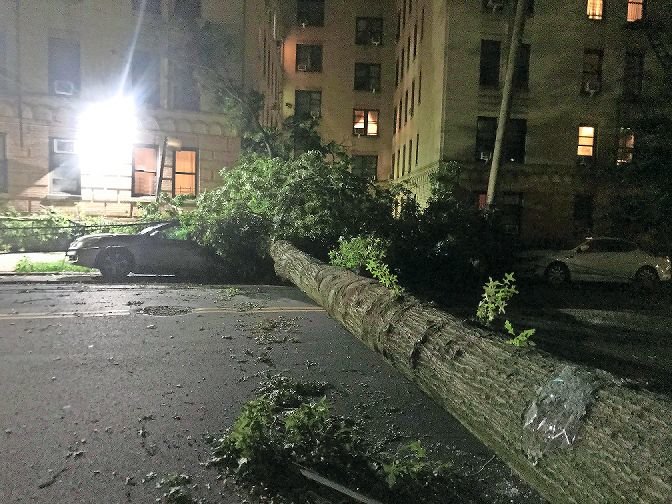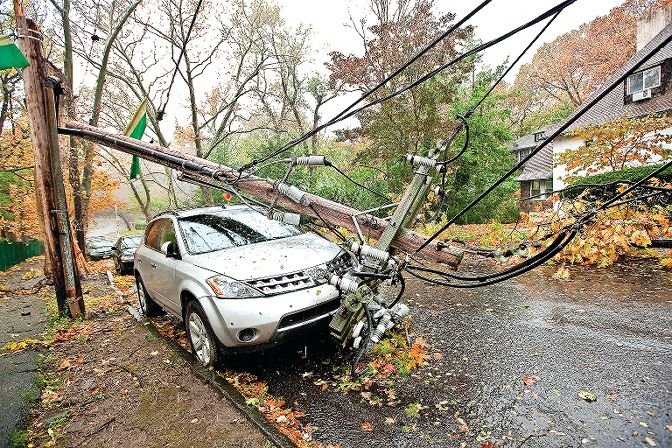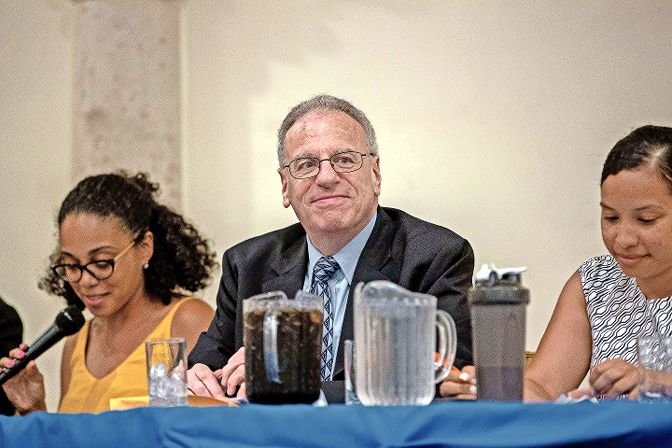ConEd's Isaias response won't win them any awards
It was about mid-day on Aug. 4 when lights started to flicker out across New York City.
Tropical Storm Isaias, the ninth named storm of the 2020 hurricane season, flooded streets and sidewalks, and downed trees and power lines with winds upward of 50 mph.
That created some dark parts of the city, especially in the Bronx, where Con Edison estimates some 23,000 households, buildings and businesses in the borough lost power.
One day without power is inconvenient, but not the end of the world. But as customers started reaching out for help, they heard expected to wait times upward of eight days for power to be restored. Temperatures on some days were in the 90s, and with many people still working from home, there weren’t many other places to go.
Elected officials, all the way up to Gov. Andrew Cuomo, criticized ConEd immediately. While crews seemingly were out in abundance, working to restore broken poles and wires, Assemblyman Jeffrey Dinowitz thought ConEd was just too far behind.
“I can appreciate that there may have been a lot of damage, but much of this destruction could have been prevented had Con Edison buried their aboveground power lines years ago,” Dinowitz said, in a release. “Instead, they chose to continue putting shareholder profits above the interests of people like us.”
Dinowitz has long pushed a bill creating an independent state consumer advocate, and in the wake of the storm, he’s picked up the mantle again.
Dinowitz’s updated bill would include ensuring those who need electricity for medical devices would be supplied with generators or an alternate place to stay. Emergency support locations would give people without power a place to charge cell phones and store their refrigerated foods and medications, the Assemblyman said, while increasing transparency between the company and customers.
Every time there’s a major storm and power lines come down, there’s the same debate: Why aren’t power lines buried? When is that going to happen, sparing us the indignity of having a tree branch knock out power for a week?
Jessica Haller, a city council candidate and long-time climate activist, said the United States has been falling behind for a long time, and burying power lines is only one small step forward.
“I’ve been giving climate talks, these climate reality presentations, for many years,” she said. “Imagine, if you will, a power pole with like a rat’s nest of wires at the top.”
During presentations, Haller notes that developing areas will never deal with that tangle of wires — the technology will “leapfrog” right over the need for them.
“Why am I even thinking about burying wires, when in rural Africa, we’re talking about leapfrogging technology?” she said.
Instead, Haller would like to see focus shift to community-owned, locally based renewables. That could mean an apartment building combining solar panels on its roof with another locally based energy source.
Haller isn’t the only one looking for community-owned power. Bronx Climate Justice North, which focuses on everything from the Putnam Trail to closing down the Indian Point nuclear power plant, is working alongside the city’s chapter of the Democratic Socialists of America on its public power campaign, endeavoring to take electricity from a privately owned commercial asset to a publicly owned necessary resource.
“We change from a power plan grid focused on generating wealth from investors, and you focus on something that’s locally accountable,” said Steve Fox, who works on the organization’s ecological projects.
Publicly owned utilities are cheaper and have fewer blackouts and power shutoffs, Fox said. He pointed to the New York Power Authority, an FDR-era state power organization.
The authority says it provides the lowest-cost electricity in the state, most of which is used by nonprofit organizations, other state organizations like the New York City Housing Authority, and some private businesses and organizations.
“Public utilities as opposed to investor-owned utilities, you see that public utilities provide better service for cheaper rates,” Fox said. “Specifically, they have less blackouts, and their blackouts are shorter.”
Con Edison did not return a request for comment.
During Hurricane Sandy, millions of people across the Northeast lost electricity, some for weeks on end. ConEd wasn’t the only utility struggle. In Long Island’s Rockville Centre, power came back for some within 24 hours, while everyone else had to wait more than a week.
Why? Rockville Centre is one of few Long Island towns with its own grid and electricity generated in part within the town’s plant, supplemented by the power authority and other sources.
As climate change progresses, New York is expected to see more frequent and more intense tropical storms and hurricanes. The National Hurricane Center predicted at least 19 major storms during the 2020 season, including nine named storms that have already swept the Atlantic.
“We’ve known for years that weather events will continue to hit the area with more frequency, coming here,” Fox said.
“What’s more concerning, though, is not even that.”
Even without a direct hit, he said, ConEd wasn’t prepared to handle the storm and the resulting outages.
In a hearing called by state lawmakers to investigate state energy utilities, ConEd representatives said they were caught off-guard by changing storm forecasts. While they were prepared for the original forecast with slower winds, what ultimately came through the city was higher sustained winds, and more damage than they had expected.
“I am glad that Gov. Cuomo has asked the Public Service Commission to investigate Con Edison’s response to these outages along with other utility providers across New York state,” Dinowitz said. “It is evident that the energy status quo in New York is broken.”













